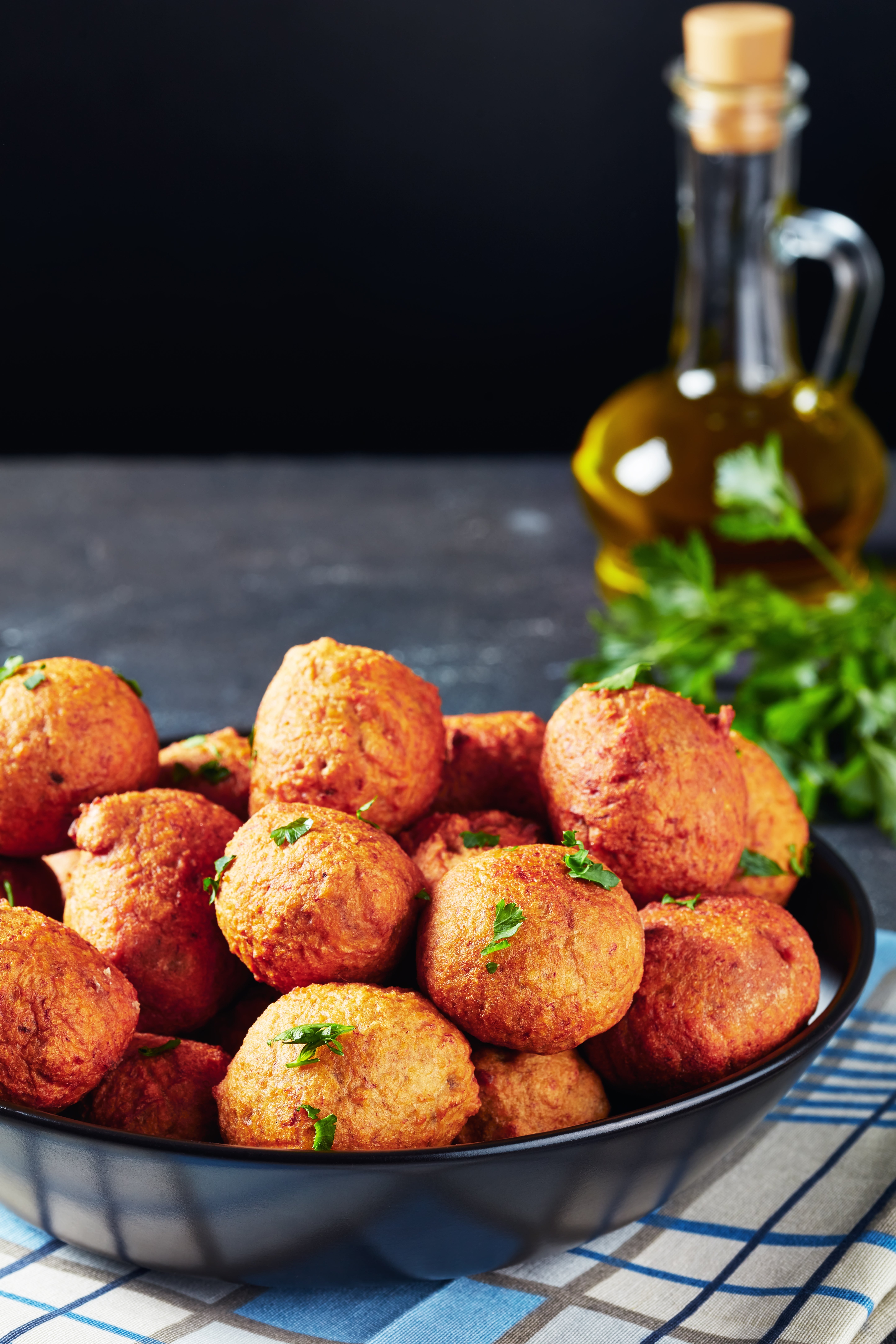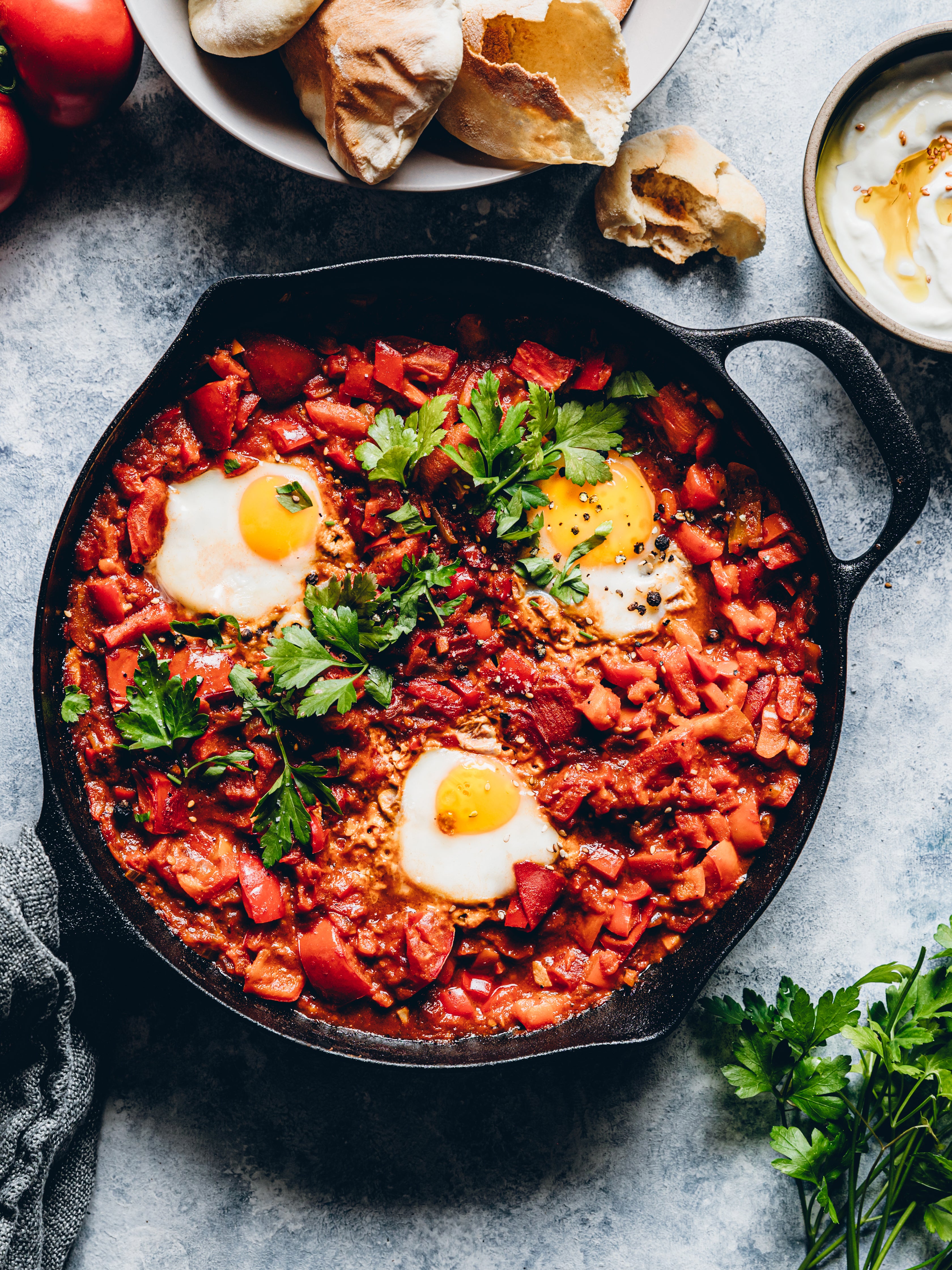Plantain is gloriously versatile – here’s how to make the most of it
Every starch has its secrets, says Yewande Komolafe. Here’s what makes plantain so exceptional

Starches – legumes, tubers, grains, to name a few – are a motley bunch. But one thing they share is how they strike a delicate balance between firm and plump, and, well, dried out or mealy when cooked. One starch, though, is sturdy enough to withstand a little overcooking and can be prepared at any stage of ripeness: the gloriously versatile plantain.
Maximising plantains’ qualities requires treating them slightly differently when they’re green and firm, and when they’re spotted yellow and black. In each form, they’re easy to work with and hard to ruin. Plantain-loving cooks among us know that you can use them in all manner of ways: in savoury soups and stews, as a side dish to proteins, and as vessels for dips and sauces.
Plantains and bananas have similar appearances, and their names are sometimes used interchangeably. In fact, plantains are occasionally referred to as “cooking bananas”. But to call a plantain a banana is a bit of an oversimplification.
Think of plantains as a subcategory of banana. They’re genetically similar, thanks to selective propagation over thousands of years. And, like bananas, plantains grow in tropical and subtropical climates across the globe, ensuring that they are always in season and making them a crucial ingredient in cuisines across West Africa, South and Central America, India and the Caribbean. But the main differences between the two are that plantains are starchier than bananas, not as easily peeled and usually not eaten raw. Rather, they shine when cooked.
As with most fruit, plantains ripen over a few days to a week (or more), evolving from a dense starch that can thicken a savoury broth to a tender, pulpy fruit that can add moisture and sweetness to a dish. Green plantains are low in sugar and high in starch, while spotted yellow and black plantains, farther along in their ripening process, are high in sugar from converted starches. Applications of heat, such as roasting and shallow or deep-frying, intensify these sugars.
Green plantains almost always work best when cooked with liquid, such as tomato sauce, coconut milk, pan drippings, and vegetable or meat stocks. Neutral in flavour, like potatoes or yams, they take on the flavour of surrounding broths. They also hold their shape in stews and soups, such as asaro and sancocho, while thickening the base and soaking up flavour.
Green or firm yellow plantains can also be peeled, cut and boiled until tender and served with eggs for breakfast. At any time of day, these plantains can be shaved thin and fried into golden crispy chips or cut into rounds, fried and smashed like tostones. They also taste great boiled and mashed, as with mofongo and mangú.
Yellow plantains, which have a high moisture content, will soften and sweeten as they cook. If you are making dodo, tatales, banan peze or any other dishes that call for pan-frying plantains, you’ll want to use ripe ones, preferably with dark spots emerging on their skins.
If you can find only green plantains and want them to ripen, pop them in a paper bag and store them on your counter. They’ll take anywhere from three to seven days to blacken, depending on how warm your kitchen is. There is a moment when the sugars in a black plantain will begin to ferment and release a slightly acrid smell. If that scent is detected or if mold begins to show on the skin, the plantains should be composted.
Nearly black plantains will add creamy, custardy sweetness to fritters, like mosa, and to breads, cakes and most baked goods. At this stage of ripeness, cooking transforms the plantains’ sugars into a caramelised sweetness.
And since its sugars only deepen in character the longer they cook, a fried ripe plantain with slightly charred edges is not ruined. It is remarkable.
Mosa (plantain fritters)

Makes: 40 fritters
Total time: 30 minutes
Ingredients:
140g yellow stone-ground cornmeal
45g all-purpose flour
1 tsp baking powder
¼ tsp baking soda
1 tsp salt
450g very ripe plantains with black peel (about 2 medium)
50g thinly sliced spring onions
1 tsp finely grated garlic
1 tbsp finely grated scrubbed fresh ginger
1 Scotch bonnet pepper, minced with seeds, or 1 tsp red-pepper flakes
80g sour cream
Neutral oil, such as vegetable or grapeseed, for frying
Fry sauce, for dipping
Method:
1. In a medium bowl, whisk together the cornmeal, flour, baking powder, baking soda and salt.
2. Cut off the ends of each plantain. Use a sharp knife to slice the peel along the length of each plantain without cutting into the flesh. Remove peels and discard. Slice plantains crosswise into 2.5cm pieces. Using a mortar and pestle or a food processor, pound or pulse the plantains into a coarse purée. Avoid making the purée too smooth, especially if using a food processor.
3. Set aside half the spring onions for garnish. Stir or pulse the remaining spring onions, the garlic, ginger and Scotch bonnet pepper into the purée in the mortar or processor. Add the purée to the cornmeal mixture, and stir until the batter is just combined and resembles a shaggy dough. Fold in the sour cream.
4. Line a baking tray with paper towels or set a wire rack in the pan. Heat 3.5cm of oil in a medium saucepan or deep frying pan over medium-high to 160C. If you don’t have a deep-fry thermometer, test the oil temperature by lowering a pea-size drop of batter into the oil. Bubbles should form around the batter, and the drop should float to the surface.
5. Working in batches to avoid crowding the pan, use a small dessert spoon to drop heaping teaspoon-size portions of the batter into the hot oil and fry, turning frequently, until golden brown, about 5 minutes. The batter should not darken too quickly or take too long to cook through, so maintain the oil temperature by raising or lowering the heat as needed. Transfer the mosas to the paper towels or rack using a slotted spoon or tongs. Repeat with the remaining batter.
6. Serve warm, garnished with the remaining spring onions, with fry sauce alongside.
Plantains with jammy tomatoes and eggs

Makes: 4 servings
Total time: 30 minutes
Ingredients:
2 firm yellow plantains (about 450g)
3 tbsp neutral oil, such as grapeseed or canola
1 small yellow onion, chopped
2 garlic cloves, sliced
1 (340g) jar roasted red peppers, drained and chopped
1 fresh or dried bay leaf
1 Scotch bonnet pepper or 1 tsp red-pepper flakes
Salt
1 (400g) can whole peeled tomatoes
4 large eggs
10g fresh herbs, such as dill or flat-leaf parsley, chopped
Method:
1. Cut off the ends of each plantain. Use a sharp knife to slice the peel along the length of each plantain without cutting into the flesh. Remove peels and discard. Cut each plantain into 5cm to 7.5cm-long pieces, and then cut each piece in half lengthwise.
2. Heat 2 tablespoons oil in a large frying pan over medium until it shimmers. Place the plantains in the pan with the long cut side down. Sear until the cut sides are deep golden brown, about 5 minutes. Transfer the plantains to a plate and set aside.
3. Pour in the remaining 1 tablespoon oil, and add the onion and garlic. Cook, stirring often, until softened, about 2 minutes. Stir in the roasted red peppers and bay leaf, and drop in the Scotch bonnet pepper. Season to taste with salt. Cook, stirring, until the liquid from the roasted peppers evaporates, about 2 minutes.
4. Add the whole peeled tomatoes with their liquid. Use a spatula to carefully break the tomatoes into smaller pieces in the pan. Fill the can with 1 cup water, swirl to rinse it and pour the liquid into the pan. Raise the heat to high and bring the sauce to a simmer. Allow the sauce to reduce, stirring occasionally, until thickened and about three-quarters its original volume, about 5 minutes. Season with additional salt if necessary.
5. Reduce the heat to medium and return the plantains to the pan, nestling each piece in the sauce seared side up until almost submerged. Cook until the plantains are just soft and the tomatoes are jammy, 4 to 6 minutes. When you poke the plantains with a fork, there should be little resistance.
6. Remove and discard the bay leaf and Scotch bonnet pepper. Make four wells in the sauce, spaced out evenly, and gently crack the eggs into the wells one at a time. Cover with a lid or aluminum foil. Cook until the whites of the eggs are set and the yolks runny, 6 to 8 minutes. Remove the pan from the heat. Garnish with the herbs and serve immediately.
And to drink...
For an eggy dish like this that can be served around the clock, what you drink depends on when you are eating. In the morning, you’re on your own, unless you are a brunch drinker, in which case the usual cocktails are in order. A bloody mary would be terrific.
If you are in the mood for wine, you have many options. I like Beaujolais with omelettes, and I think it would go well with this dish, too. So would various Mediterranean reds, as long as they are not overwhelmingly fruity. Inexpensive Corsican reds, frappatos from the Vittoria area of Sicily, less-tannic Greek reds, Lebanese reds and Spanish reds would all be delicious with this dish. If you prefer a white, try a restrained sauvignon blanc from the Loire Valley.
Pairings by Eric Asimov.
© The New York Times
Join our commenting forum
Join thought-provoking conversations, follow other Independent readers and see their replies
Comments